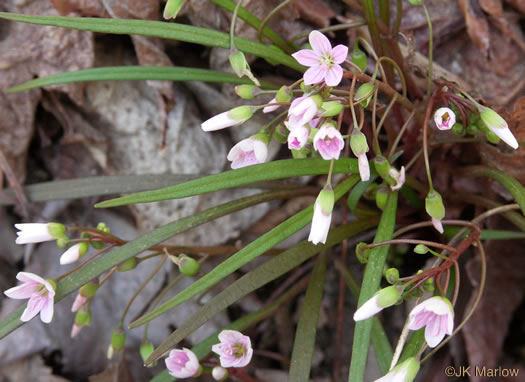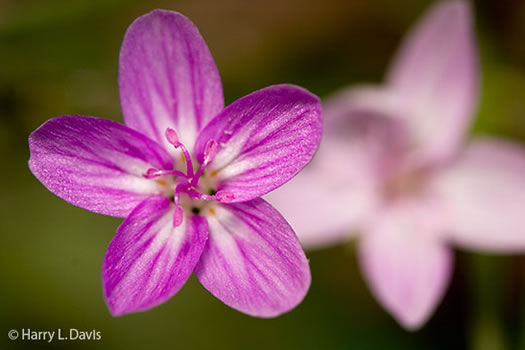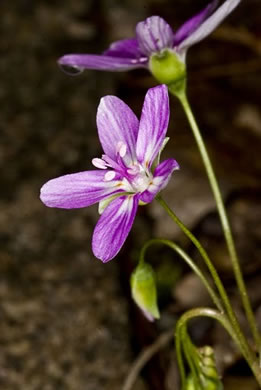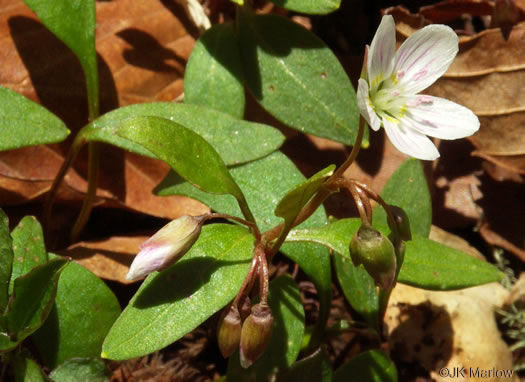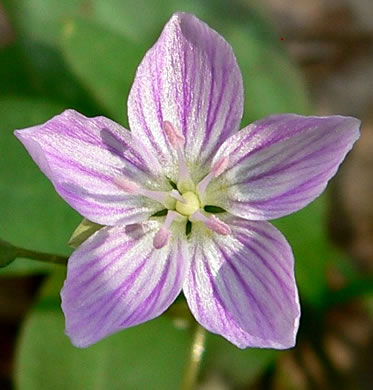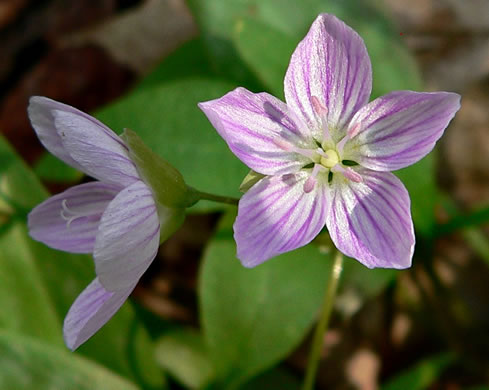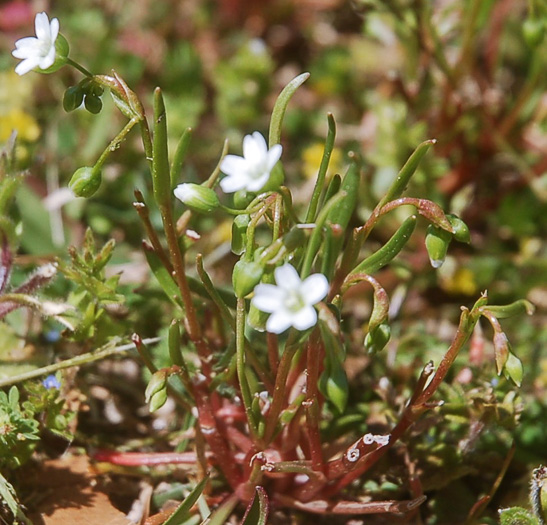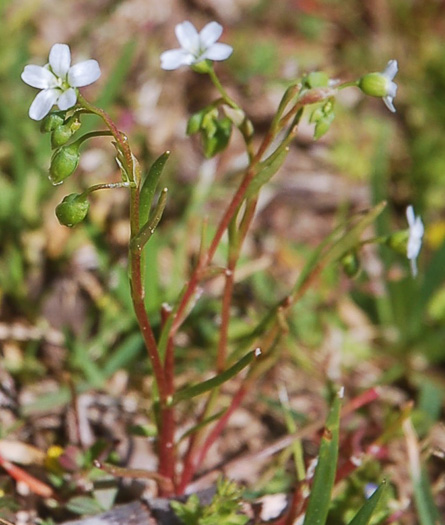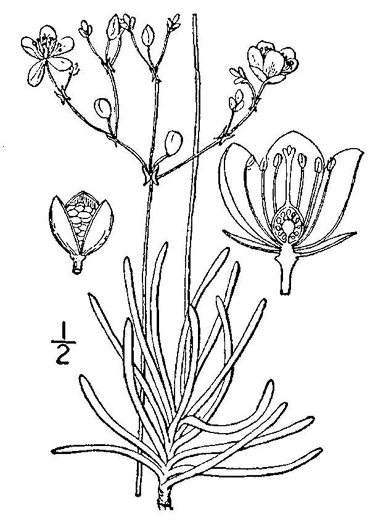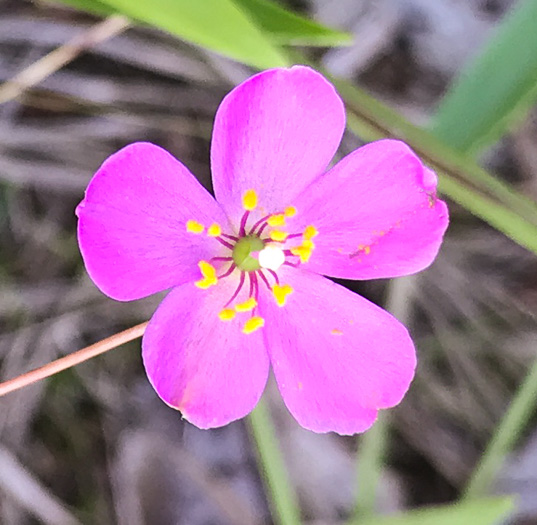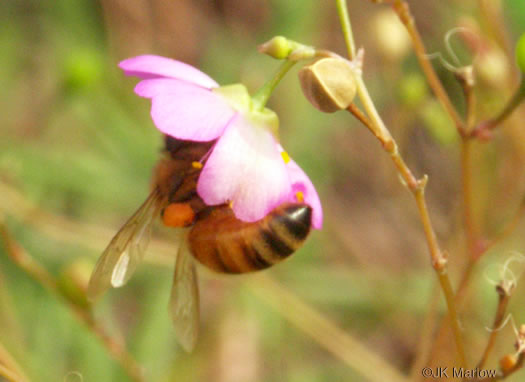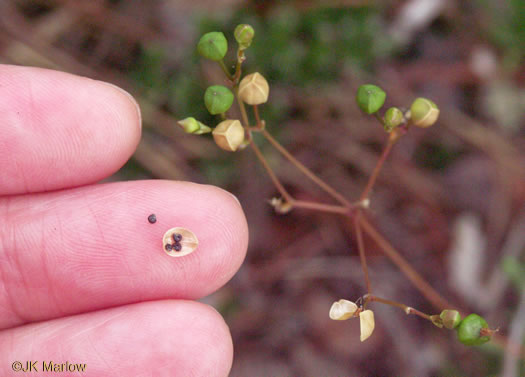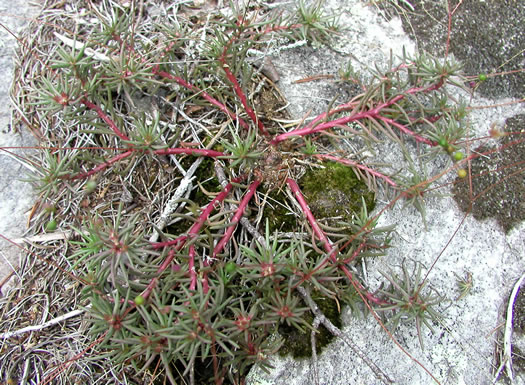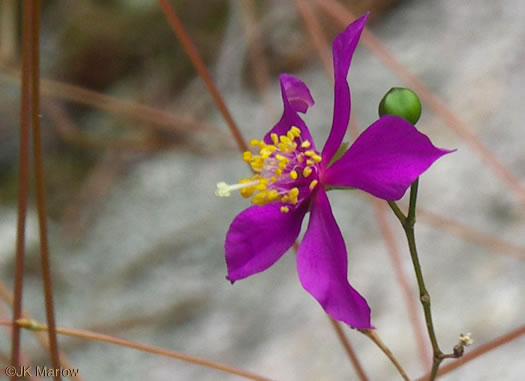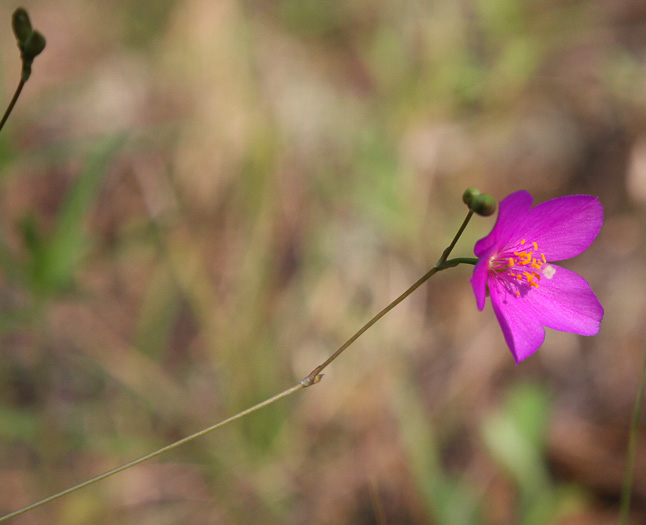Hovering over an image will enlarge it and point out features (works better on desktop than on mobile).
![]() A camera indicates there are pictures.
A camera indicates there are pictures.
![]() A speaker indicates that a botanical name is pronounced.
A speaker indicates that a botanical name is pronounced.
![]() A plus sign after a Latin name indicates that the species is further divided into varieties or subspecies.
A plus sign after a Latin name indicates that the species is further divided into varieties or subspecies.
Most habitat and range descriptions were obtained from Weakley's Flora.
Your search found 6 taxa in the family Montiaceae, Montia family, as understood by Weakley's Flora.

![]() Common Name:
Spring-beauty
Common Name:
Spring-beauty
Weakley's Flora: (4/24/22) Claytonia virginica var. virginica FAMILY: Montiaceae
INCLUDING PLANTS National Database: Claytonia virginica var. virginica FAMILY: Portulacaceae
SYNONYMOUS WITH Vascular Flora of the Carolinas (Radford, Ahles, & Bell, 1968): Claytonia virginica 070-01-001 FAMILY: Portulacaceae
Habitat: Moist forests, lawns
Common in Mountains & Piedmont (uncommon in NC Coastal Plain, rare in Coastal Plain of GA & SC)
Native to the Carolinas & Georgia

![]() Common Name:
Carolina Spring-beauty
Common Name:
Carolina Spring-beauty
Weakley's Flora: (4/24/22) Claytonia caroliniana FAMILY: Montiaceae
INCLUDING PLANTS National Database: Claytonia caroliniana var. caroliniana FAMILY: Portulacaceae
SYNONYMOUS WITH Vascular Flora of the Carolinas (Radford, Ahles, & Bell, 1968): Claytonia caroliniana 070-01-002 FAMILY: Portulacaceae
Habitat: Moist forests, especially northern hardwood forests and cove forests at moderate to high elevations
Common in NC Mountains, rare in GA
Native to North Carolina & Georgia

![]() Common Name:
Narrow-leaved Montia, Narrowleaf Miner's-lettuce
Common Name:
Narrow-leaved Montia, Narrowleaf Miner's-lettuce
Weakley's Flora: (4/24/22) Montia linearis FAMILY: Montiaceae
SYNONYMOUS WITH PLANTS National Database: Montia linearis FAMILY: Portulacaceae
Habitat: Lawns, disturbed areas
Waif(s)
Native: western North America

![]()
![]() Common Name:
Appalachian Fameflower, Appalachian Rock-pink, Rock Portulaca, Quill Fameflower
Common Name:
Appalachian Fameflower, Appalachian Rock-pink, Rock Portulaca, Quill Fameflower
Weakley's Flora: (4/24/22) Phemeranthus teretifolius FAMILY: Montiaceae
SYNONYMOUS WITH PLANTS National Database: Phemeranthus teretifolius FAMILY: Portulacaceae
SYNONYMOUS WITH Vascular Flora of the Carolinas (Radford, Ahles, & Bell, 1968): Talinum teretifolium 070-02-001 FAMILY: Portulacaceae
Habitat: In shallow soil over felsic or mafic rocks (granite, gneiss, schist, granite, diabase, greenstone, metabasalt, sandstone, Altamaha grit), especially where periodically wet by seepage (often in mats of the moss Grimmia)
Common (rare in GA Coastal Plain & GA Mountains)
Native to the Carolinas & Georgia

![]()
![]() Common Name:
Menges' Fameflower, Large-flowered Fameflower, Menges' Rock-pink, Large-flowered Rock-pink
Common Name:
Menges' Fameflower, Large-flowered Fameflower, Menges' Rock-pink, Large-flowered Rock-pink
Weakley's Flora: (4/24/22) Phemeranthus mengesii FAMILY: Montiaceae
SYNONYMOUS WITH PLANTS National Database: Phemeranthus mengesii FAMILY: Portulacaceae
Habitat: In shallow soil over felsic rocks (granite) or sandstone (in GA and AL), or Altamaha Grit (GA), where periodically wet by seepage; rare (locally common in GA)
Uncommon in Piedmont, rare in Coastal Plain (rare in SC)
Native to South Carolina & Georgia

![]() Common Name:
Piedmont Rock-pink, Piedmont Fameflower
Common Name:
Piedmont Rock-pink, Piedmont Fameflower
Weakley's Flora: (4/24/22) Phemeranthus piedmontanus FAMILY: Montiaceae
INCLUDED WITHIN PLANTS National Database: Phemeranthus mengesii FAMILY: Portulacaceae
Habitat: In periodic seepage on mafic or ultramafic rocks
Rare
Native to North Carolina
Your search found 6 taxa. You are on page PAGE 1 out of 1 pages.


